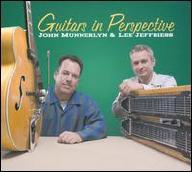Although an innovative group that influenced Western swing, and to a lesser extent bluegrass, the East Texas Serenaders did not extend its inventive group mentality to the banjo. The group's banjoist, John Munnerlyn, was a walking metronome, chording and keeping the rhythm on top of the oddball and propulsive bowing of cellist Henry Bogan, whose presence in a string band was enough to raise eyebrows in itself. The group recorded some two dozen sides between 1927 and 1936, and the only documented exception to Munnerlyn's usual responsibilities was the track entitled Before I Grew to Love You, recorded in 1929 for the Brunswick label. On this track the group's leader and fiddler, Daniel Huggins Williams, steps away from the front spot to allow the banjo to play the lead melody for a change, so perhaps the title of the piece was a comment on the banjoist's state of mind prior to being allowed to record the number. The group was formed by Williams and guitarist Cloet Hamman, both of whom came from the dinky town of Linsdale, near Tyler, TX. Munnerlyn may have also hailed from this part of Texas. While the tenor banjo was an audible and visual entity in string bands, and certainly more common than the cello, some writers have also included Munnerlyn and his instrument as one of the novel aspects of this group.
The repertoire of the group must have presented a challenge to the banjoist, as the East Texas Serenaders were known for playing in many unusual keys, not just sticking to the G, A, and D songs that were so GAD-darn popular with typical square dances. In fact, the band avoided the square dance bag completely. Rags, jazzy numbers that sound like rags, and waltzes made up most of the group's repertoire, with the waltzes becoming particularly requested items among dancers. Munnerlyn's feel in waltz time was superb, particularly on tracks such as Shannon Waltz and Sweetest Flower Waltz. The only really valuable recorded document of this group is the Complete Recorded Works compact disc issued by Document; but many listeners may come into contact with the East Texas Serenaders through a short offering on any number of compilations, from the subject of old-time Texas string bands, in which the group's presence is historic, to massive multi-disc overviews of the entire history of American pop music, in which the East Texas Serenaders occupy a charmed spot as well.
In 1929, Munnerlyn left the band, relocating to Houston. He was replaced by banjoist Shorty Lester, whose brother, Henry Lester, also came into the group around the same time to provide a second fiddle part. Munnerlyn did not record again after this; his name only came up many generations later when an illustrator, designer, and art director of the same name emerged on the skateboard scene. This person was also a timekeeper, drumming in a band called the Diesel Queens which promoted itself as providing "the ultimate in punk performance art," which perhaps after all is nothing more than a modern version of a square dance. The punk artist used the stage name of Johnny Mojo, preventing any possible confusion with an old-time banjo man. ~ Eugene Chadbourne, Rovi












